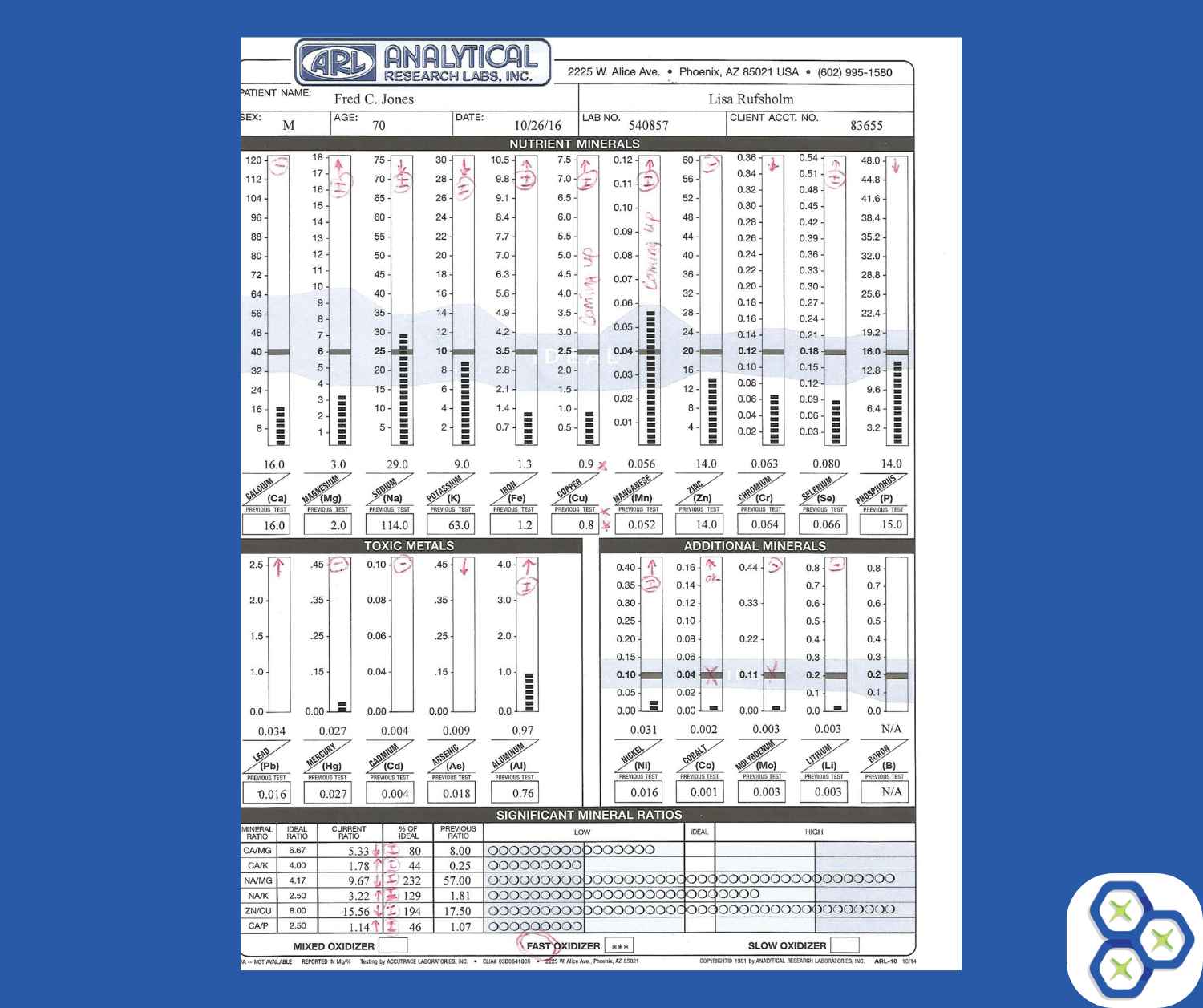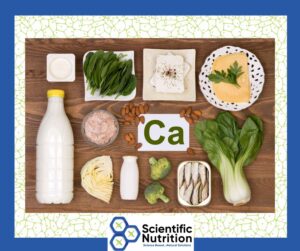What is your Sodium to Potassium ratio?
Why it’s your BIGGEST health indicator!
Most people worry more about their cholesterol level but this ratio is your life vitality measurement.
Why is your sodium to potassium ratio so important?
There is so many health issues linked to your Na/K. Knowing what the symptoms of a high or low Na-K ratio are and how to correct the problem naturally with hair analysis can be life-changing! The perfect ratio is 2.50 or 25ppm Sodium to 10ppm Potassium.
In a study done by the National Institute of Health a link to this imbalance with heart disease and blood pressure issues in individuals with a high Sodium to Potassium ratio. Those with high levels were not at as much of a risk as those having the Na/K ratio elevated.
The Harvard Health Medical School recognizes the importance of the Sodium to Potassium ratio balance as well although their range is too far apart. We tend to eat significantly less Potassium than in past generations but we still need more Sodium for cellular functions than recommended by the school. Analytical Research Labs, Inc. has over 45 years of pioneered experience proving the 2.50 ratio is ideal.
Sodium-Potassium Balance Importance or Na to K Balance
Electrolyte laced sports drinks re-hydrate you quickly, and you’ll find the sodium, potassium, and magnesium added into the products provide those nutrients. When we exercise excessively and sweat a lot we lose our cellular storage of electrolytes that are essential to staying alive.
Your doctor may have talked to you about your electrolytes, sodium, and potassium, but may not have explained why they are so important. They may have told you to decrease your sodium intake or your salt intake, and increase your potassium by taking supplements, eating bananas or apricots, or adjusting it with medication.
But why is the balance between these two so important? Think of them pushing and pulling together to get every job done. You need equal strength and the right amount to be efficient.
What is the Na-K Ratio?
The sodium-potassium ratio is a measure of those two specific electrolytes in your body and how they affect various biological functions. Some of these functions include cell permeability, stress and hormones, inflammatory markers, underlying illness and how well you will recover. If one or the other electrolyte becomes too high or low, it could result in severe illness or even death.
Your hair mineral analysis is imperative for you to know what your body is doing and how you can correct potential problems. It tells you how your body is behaving and can give you a warning of an issue long before the doctor does.
On your hair mineral analysis, you will see the Na-K ratio on the bottom of the sheet. This number will reflect what your average Na-K balance has been over the past month. We want to see this number to be approximately 2.50 on your analysis. If your result is higher, you possibly have too much sodium, if lower, you may have too much potassium.
Why Your Sodium to Potassium looks different on a blood test than on a Hair Mineral Analysis?
In your blood, we want to see a much higher level of potassium than sodium. However, the average American diet is highly skewed towards much more sodium than potassium. According to Harvard, this results in high blood pressure, increased risk of stroke, heart failure, osteoporosis, stomach cancer, and kidney disease.
More notably, if the sodium-potassium ratio is unbalanced, we see a much higher level of metal toxicity in the cells. Heavy metals, toxic chemicals, and waste products accumulate, throwing off the sodium-potassium ratio. This metal accumulation has been linked to
- Alzheimer’s Disease
- fatigue
- suppressed organ function
- inability to lose weight
- the ability of your cells to absorb nutrients, oxygen, and hormones is severely hampered
Sodium, Potassium, and Cell Permeability?
Each cell in our body has a particular transport system to move nutrients from your blood into the cell. This transport system is called the Sodium-Potassium Pump. It is an active transport process that is governed by the amounts of sodium and potassium in and outside the cell. Think of this as scaffolding that supports every protein in each cell working to create energy. It is also especially crucial to our nerve cells to communicate.
Keeping a higher amount of sodium outside of the cells and a higher amount of potassium inside the cells works through several chemical reactions that provide energy and inertia. This allows your cells to move other nutrients, toxins, and waste products in or out of your cells. This balance is critical for our survival and linked to adrenal fatigue.
Keeping this balance where it should be, means nutrients and waste move in and out of the cells efficiently. If we come to close to an equal ratio between sodium and potassium (equilibrium), we slow down the cell permeability to the point that nothing can get in or out, and the cell dies.
If our sodium levels get too high, it could cause water, toxins, and nutrients to flow out of the cells too quickly, causing dehydration. Now, the cells have to work extra hard, leading to fatigue and disease. High blood pressure is one of the conditions resulting from too much sodium pushed into the bloodstream.
The opposite is true if we have too much potassium. It could cause too much fluid to flow into the cell (trying to dilute the sodium), literally causing it to burst.
What If the Sodium and Potassium Balance is Off?
It doesn’t feel good when your sodium to potassium balance is wrong. Something literally feels off.
Most of the time, we see signs of stress in the body and the mind. People feel a lot of fatigue, emotional conflict, lowered vitality, more anxiety, frustration, irritability, resentment, unexplained anger, and feelings of being stuck. You may find your craving for sugary foods to offset some of the salts you have built up.
Physically, you may have a diagnosis of with high blood pressure, suppressed adrenal function, or liver problems. Kidney issues also show up when your Sodium or Potassium is unbalanced. It is often a late-stage form reflecting exhaustion.
Many people find aldosterone and other inflammatory hormones increased when they have too much sodium in their system. These inflammatory hormones can suppress serotonin and dopamine in the brain, which can make you feel depressed and tired.
For some people, a high level of Na/K can show hidden copper toxicity. This is especially true if people find their metabolism has dramatically slowed down, and they put on a lot of weight they just can’t get off.
Too much sodium can also throw off your ability to absorb and metabolize zinc and iron. With a high Na/K ratio, iron may deposit between joints and cause pain and inflammation. This elevated Sodium/Potassium depresses zinc stores, which are responsible for helping absorb and utilize potassium as well as magnesium. Keeping the ratio in the ideal range helps us ward off illness.
Symptoms of a sodium-potassium deficiency?
- Tingly or numbness in extremities
- Feeling of skipped heart beats or palpitations
- Adrenal fatigue
- Chronic stress
- Muscle damage, weakness or spasms
- Constipation
What to do right now to help your Na to K ratio?
If you’re eating a lot of processed foods or adding a lot of iodized salt to your meals, we do recommend cutting back. It will help move many of your results back into normal ranges. Focus on vegetables as the central part of your diet, healthy fats, and some animal protein.
However, you may not have a high sodium level because you’re overeating salt. It could be caused by several other factors, so you will want to talk to a Hair Analysis expert, me! I can determine where the excess sodium in your diet is coming from and how to balance your sodium and potassium without affecting the other minerals you need.
Drink plenty of spring water for additional minerals. It may help to clear out excess sodium and brings balance back to your body. Many brands will add fluoride without listing it on the label, so if you would like recommendations, email me.
Hair Analysis and the Sodium to Potassium
This ratio is the most important information we can use on the Hair Trace Mineral Analysis (HTMA) to correct balance, improve inflammation, absorb nutrients and oxygen as well as maintain cellular hydration. Are you ready to change your life and longevity?
There has never been a better time to improve your health from the cellular level out!
LET’S CHAT about your health goals!
Learn how the Sodium to Potassium ratio can make you tired.
Copyright Scientific Nutrition, LLC 2020




